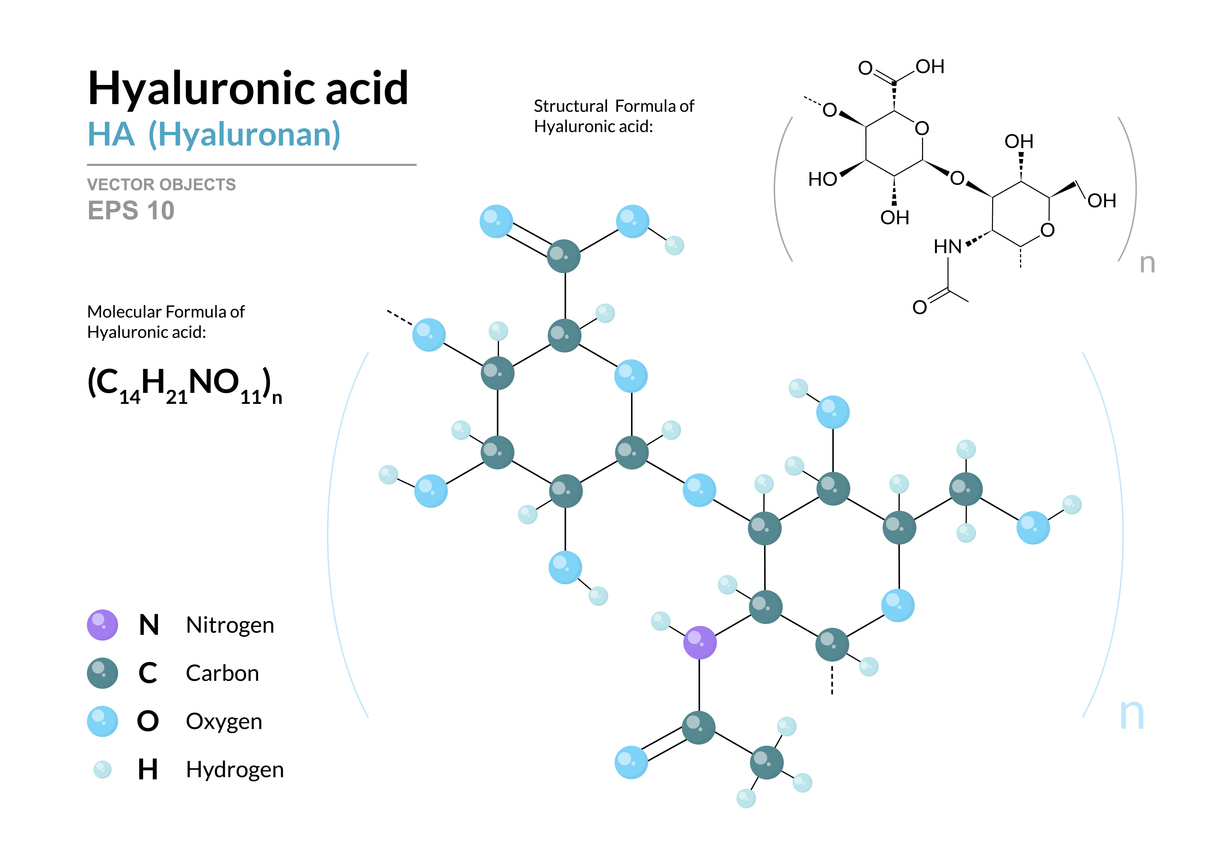Laurie's Blogs.
May 2023
Oral administration of hyaluronic acid for osteoarthritis in dogs

I had a client ask me about a product recently. Usually, I am very skeptical! This time was not different. This time the question was pertaining to an orally administered hyaluronic acid (HA) formulation. From what I could recall in the past, practitioners had questioned the bioavailability of ingestible HA. That was years ago. What did the research say now? I dove in to find out.
What is Hyaluronic Acid?
Hyaluronic acid (HA) is a naturally occurring polysaccharide found in the body. It is involved in many biological processes, including tissue repair and maintenance, wound healing, and inflammation. Due to its unique properties, HA has become a popular ingredient in many skincare products and supplements. In this blog, I dive into the bioavailability of oral hyaluronic acid supplements and what the research says about their effectiveness.
Bioavailability of Oral Hyaluronic Acid Supplements
Bioavailability refers to the extent and rate at which a substance enters the bloodstream and is available for use by the body. In the case of oral hyaluronic acid supplements, the bioavailability is a critical factor in determining its effectiveness. The reason being is that HA is a large molecule and is typically broken down during digestion into smaller fragments that may or may not be as effective. The first study to report evidence for uptake and distribution to connective tissues of orally administered, high-molecular-weight HA was published in 2008.
One study found that oral supplementation with a high molecular weight HA for 56 days improved joint function and mobility in dogs with OA. Another study found that oral supplementation with a low molecular weight HA for 60 days reduced pain and improved mobility in dogs with OA.
While the bioavailability of oral HA in dogs is not well studied, some evidence suggests that the size of the HA molecule may impact its effectiveness. One study found that a low molecular weight form of HA had higher bioavailability and was more effective in reducing inflammation in dogs with OA than a high molecular weight form.
Factors Affecting the Bioavailability of Oral Hyaluronic Acid
Several factors can affect the bioavailability of oral HA supplements. For example, the size of the molecule and the formulation of the supplement can impact its absorption and effectiveness. One study found that a low molecular weight form of hyaluronic acid had higher bioavailability than a high molecular weight form.
The presence of other nutrients or compounds in the supplement can also affect the bioavailability of HA. One study found that the addition of vitamin C to an oral HA supplement increased the absorption and bioavailability of HA in the body.
Additionally, the individual's digestive system and gut microbiome can play a role in the bioavailability of oral HA supplements. For example, the presence of certain bacteria in the gut can break down HA into smaller fragments, reducing its effectiveness.
Conclusion
In conclusion, oral supplementation with hyaluronic acid may be an effective treatment option for dogs with osteoarthritis. While the bioavailability of oral HA in dogs is not well understood, studies suggest that both low and high molecular weight forms of HA may have benefits for joint health and function in dogs with OA.
References:
- Balogh L, Polyak A, Mathe D, et al. Absorption, uptake and tissue affinity of high-molecular-weight hyaluronan after oral administration in rats and dogs. J Agric Food Chem. 2008;56(22):10582-10593.
- Kalman DS, Heimer M, Valdeon A, Schwartz HI, Sheldon E. Effect of a natural extract of chicken combs with a high content of hyaluronic acid (Hyal-Joint) on pain relief and quality of life in subjects with knee osteoarthritis: a pilot randomized double-blind placebo-controlled trial. Nutr J. 2008;7:3.
- Rychen G, Aquino G, Fournier A, et al. A low molecular weight hyaluronan (LMW-HA) prevents the development of cartilage lesions in an animal model of osteoarthritis. Osteoarthritis Cartilage. 2008;16 Suppl 3:S19-S20.
- Jerosch J, Pryymachuk G, Schunke M. A prospective, randomized, open-label, multicenter, comparative study of safety and efficacy of intra-articular injections of hyaluronic acid (Hyalubrix®) alone versus in combination with N-acetyl-glucosamine (Hyalubrix® Plus) in severe knee osteoarthritis (OA) Stage III and IV-A: the ANTIAGE study. J Orthop Surg Res. 2019;14(1):1-11.
- Hirota K, Hashimoto M, Yamada Y, et al. Effect of concomitant administration of collagen tripeptide with hyaluronic acid on absorption and distribution of oral hyaluronic acid in rats. Int J Pharm. 2018;547(1-2):347-353.
- La Gatta A, Ruggiero G, Iovene MR, et al. Oral supplementation with a nutraceutical formulation containing hyaluronic acid, chondroitin sulfate, curcumin and quercetin in patients with mild osteoarthritis of the knee: a randomized, double-blind, placebo-controlled study. Nutrients. 2019;11(8):1794.
- Tamura T, Ota K, Ohnishi S, et al. Effects of high-molecular-weight hyaluronan on the distribution of hyaluronan after oral administration in rats. J Agric Food Chem. 2017;65(13):2825-2831.


